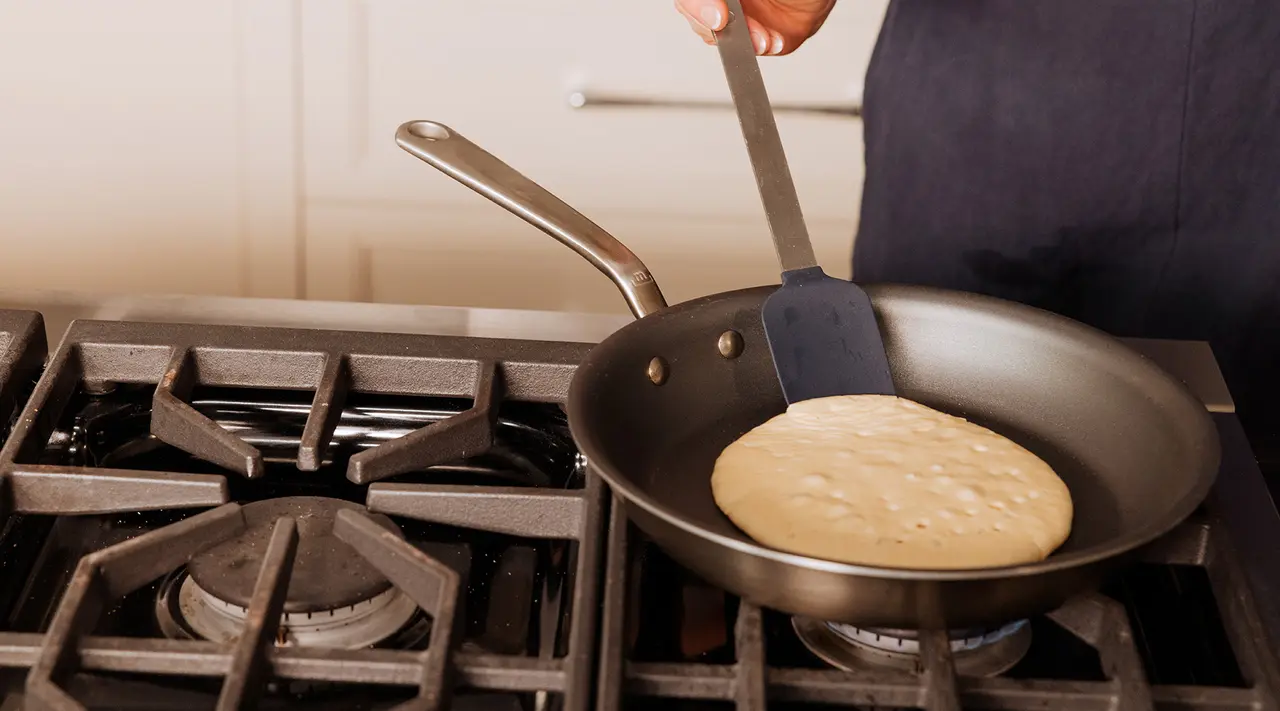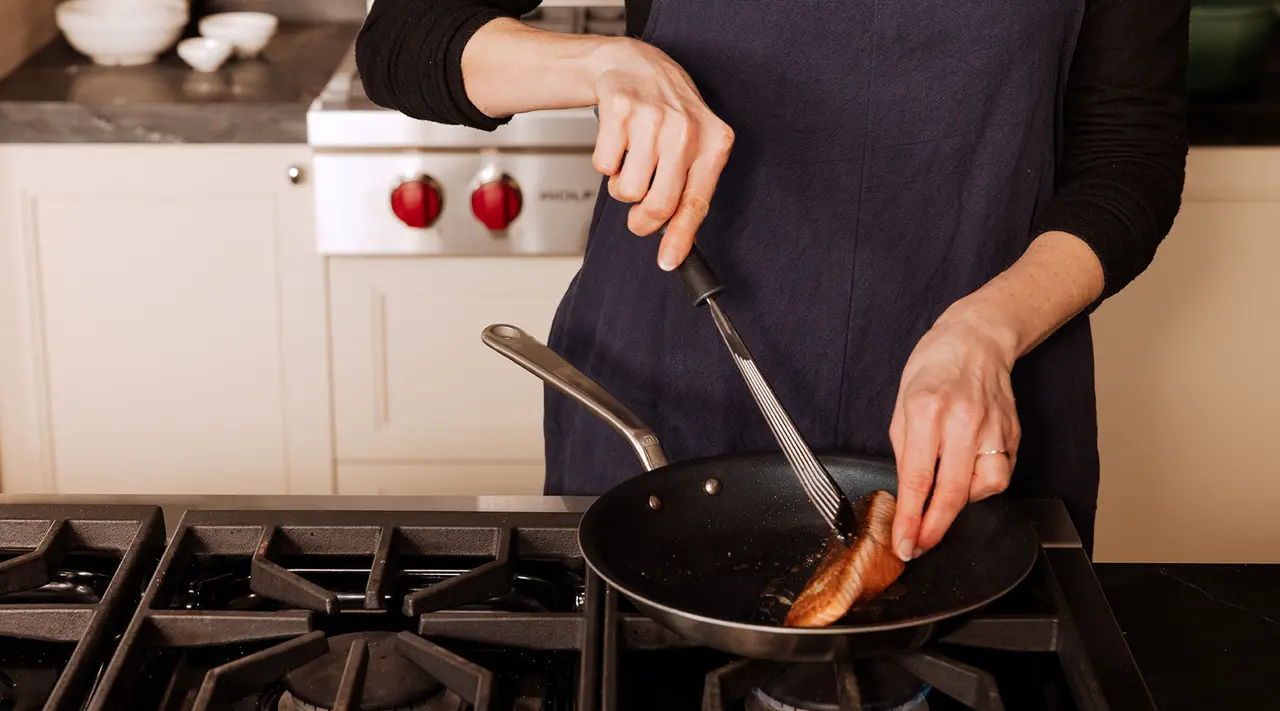For most, cooking with non stick is as straightforward as it gets. Easy, no-stick cooking, no seasoning or learning curve required, and even easier cleanup—it doesn't get simpler than that.
That said, there is one important consideration to keep in mind when handling non stick cookware. Due to the often delicate nature of non stick coating, the cooking utensils you reach for are important, in order to preserve the coating for many meals to come.
Here, we’ll cover the dos and don’ts of tool selection for your non stick cookware, as well as provide our suggestions for tools that give you the best results (and longest lifespan) out of your pan.
Why Should You Use Specific Tools with Non Stick?

If you were cooking in a stainless or carbon steel pan, you wouldn’t need to worry about what type of tools you use, as these materials are near indestructible.
Non stick is a bit different. While our Non Stick Collections as a whole is incredibly durable, the non stick coating itself is more delicate. This means you need to be aware of your tool choice when cooking to maintain the surface—if you use an abrasive utensil material (like a stainless steel spatula), you run the risk of scratching or even chipping the coating, which could result in a loss of non stick properties.
What are the Best Utensils for Non Stick Pans?

There are three categories of utensils we recommend: Wooden, silicone, and nylon. All three of these materials have different properties that are ideal for use with non stick cookware, mainly their soft, scratch-free nature.
Wooden
Wooden utensils have been around for millenia and are widely used as the material of choice for a variety of kitchen tools, both in the kitchen and out. Wood is just hard and rigid enough to break up huge chunks of ground meat or to scrape up fond from the bottom of a pan, but malleable enough that it won’t scratch or gouge the delicate coating.
It is also a naturally occurring material, and wooden tools can be found most anywhere—you probably have a favorite Wooden Spoon lurking around your kitchen as we speak.
While wooden utensils are workhorses of the home kitchen, they do require more maintenance than other materials. For starters, they cannot be run through the dishwasher or left wet for long periods, as this can lead to the wood warping, cracking, or breaking altogether. They also need to be oiled occasionally to avoid cracking.
Silicone
If you're looking for extremely low maintenance tools, look no further than those made of silicone. This material is incredibly durable, heat safe to high temperatures, dishwasher safe, and fantastic for use in non stick cookware. They offer a delicate touch and mold to the shape of your pan to get to every last drop. If you find the right silicone utensil, it makes a world of difference to your cooking.
They are not without some considerations. While most silicone is heat-safe to well over 500F, some utensils are not designated as heat-safe and could have the potential to melt onto your pan if exposed to heat for long enough. Additionally, some silicone utensils are made of 2 pieces—a handle and a head. Over time, the adhesive used to adhere the head can wear out, causing the head to come loose.
We recommend looking for a silicone utensil that is heat-safe above 500F with a stainless steel core for better rigidity and durability. Our Rubber Spatula features a silicone head, 304 Stainless Steel body, and wide, flat shape that's both durable and safe enough for use on non stick.
Nylon
Nylon utensils have been around for decades and are a staple in most home kitchens. They are rigid yet flexible, durable yet easy to maintain, and are typically dishwasher safe and don’t require special maintenance. They are also incredibly affordable in most cases and come in a variety of shapes.
While safe for use on non stick nylon is still a fairly rigid material. It won’t typically leave deep scratches or chips on the surface of non stick, but it can leave noticeable scuffs and superficial scratches—which don’t affect the cooking performance, only the appearance. Additionally, nylon often has quite a low heat safety rating and could melt if left exposed to heat for too long. Over time, nylon can become brittle and crack, so these tools are not ideal for lifetime use.
While they are easy to maintain, you may find they need to be replaced more often than wooden or silicone tools.
Ready to Cook?
With so many different utensil materials on the market, finding one that won’t damage your Non Stick Pans can be a challenge. Luckily, you can never go wrong with having multiple utensils made of different materials for individual uses and different levels of required maintenance.
Whether you go with a Wooden Spoon, a Rubber Spatula, or a nylon flipper, these all can have a space in your kitchen for protecting your Non Stick.































